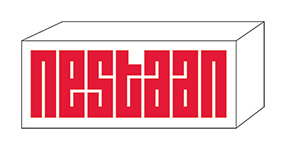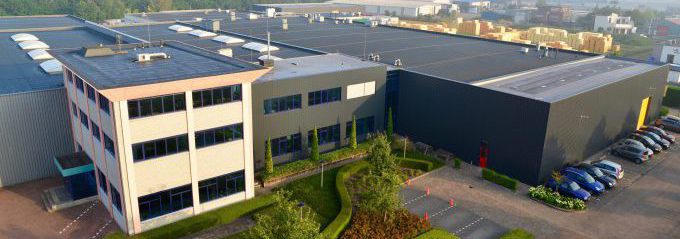FAQ
- What is insulation?
Insulation helps to keep our buildings warm and our food cool, it is usually hidden, but you will find it everywhere, from sport stadiums to hospitals, from coolers to houses, and it is one of our most important weapons to fight climate change.
- Why is insulation important?
Although you might not realize it, insulation is one of the most important aspects of building specifications, for several reasons. It ensures a comfortable inner temperature and guarantees a pleasant live and work environment for those using the building. It reduces the energy consumption and energy costs; it helps to fight climate change and supports saving the energy provision.
- Does PU insulate better than other insulation materials?
The main quality of insulation is bad conduction of heat or cold. The worse the conductivity the better the insulation value. To achieve the same insulation result you need different thicknesses, depending on the material. If you need 100 mm PU in a certain situation, you will need 146 mm EPS, 150 mm XPS, 154 mm rock wool and 167 mm stone wool for the same result. It is obvious that polyurethane is more efficient than the alternative insulation products.
- Is it worth to insulate houses?
In Europe approximately 40% of the energy is used in buildings, 60% of this is for heating. Well insulated homes are one of the easiest and most important things we can do to reduce the energy consumption and fight climate change. PU insulation is one of the most effective insulation materials there are and can achieve a very high thermal return with an extremely low thickness. With a lambda value (thermal conductivity) of only 0,022 W/m.K equal insulation values (U-values) can be achieved with much lower thicknesses than other widely used materials.
- Is PU sustainable?
One of the main aspects is how effective the insulation will stay in time. At last it is an investment to make you save money which is only possible if the thermal effect stays the same.
Rigid PU insulation with a closed cell structure is not troubled by steam or air infiltration, it cannot bend or settle, and it is hard to crush, which gives a higher guarantee for an excellent effect during the complete live cycle of the building.
- Does PU contribute to a better environment?
Insulation can reduce the carbon emission and fight climate change. During her life cycle PU insulation saves approximately 80 times more energy than what is needed to produce the material. It is produced without the use of ozone depleting gasses. In some cases the material can be mechanically recycled or used for energy reprocessing which results in further reduction of demand for fossil fuel
- Is PU safe?
PU is safe and chemically inert. PU is not considered as dangerous and there is no limit to exposure. The low permeability causes no condensation and mould in buildings. Air refreshment through ventilation and air leakages are much more important than the permeability in order to prevent atmospheric humidity, surface condensation, mould growth, dust mites and the resulting health problems.
- Is PU fire safe?
Most insulation materials are covered with plaster, bricks, blocks or roof facings and are only a minor factor during fire. The fire behavior should always be judged as part of the whole building. Although it is considered a combustible material, PU insulation doesn’t simmer, melt or drip when heated. It can even help to prevent the fire to expand. PU insulation systems exceed the fire regulations and insurance requirements in numerous applications.
- Which fire classes do we know?
Many of the member countries of the European Union (EU) have adopted the harmonized Euroclass system of reaction to fire performance of building products. The Euroclass decision includes a classification system for building products based on their reaction-to-fire performance.
The purpose of harmonization is to facilitate the trade of building products between the member countries of the EU by removing trade barriers due to differences in test methods and classification systems. Previously, products had to be tested and classified according to national standards in each country in which they were launched to the market. In the new system, the Euroclass classification of a product is acknowledged in all member countries based on its performance in the harmonized fire tests.
Within the European system we have 7 Euro Classes, A1, A2, B, C, D, E and F. Class A1 is the highest, class F the lowest
Euroclass Performance description Class A1 No contribution to fire Class A2 No contribution to fire Class B Very limited contribution to fire Class C Limited contribution to fire Class D Acceptable contribution to fire Class E Acceptable contribution to fire Class F No performance requirements Besides Euroclass two more classifications exist. These are connected with smoke development (s) and the development of flame droplets (d) of the product.
For smoke production there are 3 different classes:
s1: little smoke production
s2: average smoke production
s3: large smoke productionThe development of flame droplets is an immediate danger for people and the creation of new fires at other places. Just like the smoke development there are 3 classes:
d0: no production of burning parts
d1: parts burn shorter than 10 seconds
d2: parts burn longer than 10 secondsExample
A building product with classification B, s1, d0, will contribute very little to expansion of the fire, produces little smoke and will not create new fire spots.- Is the material dimension stable?
One of the main benefits of PU insulation is that it will not bend of settle in time, and it is easy to adjust and install. The chance on gaps or cold bridges is smaller to enhance the guarantee on permanent efficiency during the life cycle of the building. It is also easy to fill the joints in order to create a higher level of air-tightness, for yet a better thermal efficiency.
- Is PU a solid material?
PU insulation offers a dimensional stability and good compressive strength, but is much lighter and easy to handle than other insulation materials. PU insulation is walking proof; this is an important quality, especially when used in modern flat roofs, made watertight with one layer of foil.






